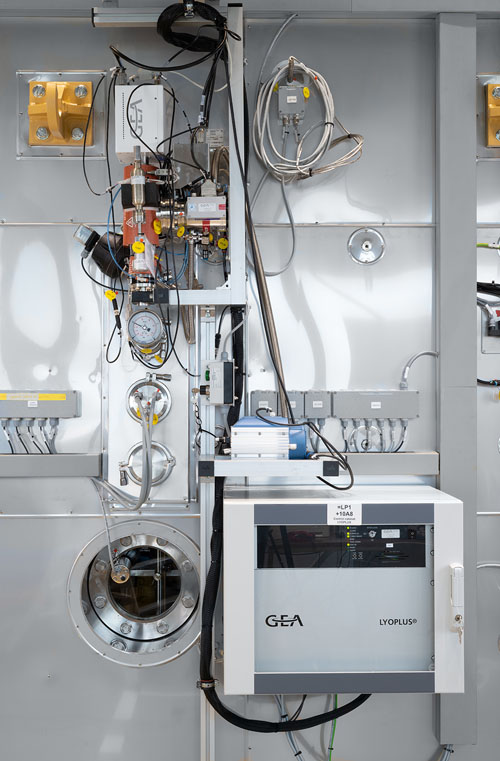Interestingly, notes Jessica, a lot of the revised content is new to Annex 1 — the European Commission’s revised good manufacturing practice (GMP) guidelines — but not new to GEA.
For example, in terms of qualification or a quality plan for the entire project, that’s always been part of the way we work.
For example, when it comes to plant documentation, Annex 1 specifies the following: “A written, detailed description of the equipment design should be available (including process and instrumentation diagrams as appropriate). This should form part of the initial qualification package and be kept up to date.”
GEA goes to great lengths to explain what qualification is required and how it’s done. Specifically, what’s included in our qualification package is at the very heart of our equipment design, whether that’s functional, layout, hardware or software, P&ID or wiring diagrams, etc., all of which are essential and comprise part of the documentation bundle that we supply.
Training and education
Annex 1 also states: “Personnel should have adequate qualifications and experience, training and behaviour.” We provide the technical know-how and offer the GMP experience required to fulfil the qualification steps needed for our equipment.
We are also experts in GAMP5, good documentation practice (GDP) and hygienic/aseptic processing, which are very important when it comes to installation and operational qualification (IQ/OQ).
Not only does GEA provide GMP and IQ/OQ training, but the company also awards an internal certificate for those who complete the course(s).
Observation and access
Being part of Jessica’s job to run the GMP training, she’s keeping a close eye on the recent regulatory developments. There are several new facility requirements, she notes, such as the following.
“Facilities should be designed to permit observation of production activities from outside the grade A and B areas (through the provision of windows or remote cameras with a full view of the area and processes to allow observation and supervision without entry). This requirement should be considered when designing new facilities or during the refurbishment of existing ones.”
Sometimes it’s essential to be able to look inside a working freeze dryer to monitor the process. You don’t necessarily need to be there in person, adds Jessica: it’s acceptable to use a remote camera and a live transmission.
Perhaps related, and as far as is practicable, equipment, fittings and services should be designed and installed so that any procedures, maintenance and repairs can be done outside the cleanroom.
Normally, there’s a cleanroom wall in front of the freeze dryer; the maintenance staff remain behind this wall but have access to the equipment that doesn’t compromise the integrity of the room.
Direct versus indirect contact
What’s also new in Annex 1 is the differentiation between direct and indirect product contact parts. The regulation states: “For aseptic processes, direct and indirect product contact parts should be sterilised."

"Direct product contact parts are those that the product passes through, such as filling needles or pumps. Indirect product contact parts are equipment items that do not contact the product, but may encounter other sterilised surfaces, the cleanliness of which is critical to overall product sterility (sterilised items such as stopper bowls, guides and sterilised components).”
This is good news for GEA, enthuses Jessica, because we don’t have any direct contact parts.
The content being lyophilised is in direct contact with the vials … but not the process equipment. As such, a freeze dryer only has indirect product contact parts.
Furthermore, equipment monitoring requirements should be defined in “user requirement specifications” during the early stages of development and confirmed during qualification.
Process and equipment alarm events should be acknowledged and evaluated for trends. The frequency at which alarms are assessed should be based on their criticality (with high-priority alarms being reviewed immediately).
All GEA systems provide a three-colour alarm history with which you can see when an alarm occurs, when it’s acknowledged and when it’s been dealt with. Another update relates to utilities.
“Gases used in aseptic processes should be filtered through a sterilising-grade filter (with a maximum pore size of 0.22 µm) at the point of use. When the filter is used on a batch basis (to filter a gas used to overlay aseptically filled products) or as a product vessel vent filter, then it should be integrity tested and the results reviewed as part of the batch certification/release process."
"Any transfer pipework or tubing that is located after the final sterilising grade filter should be sterilised. When gases are used in the process, microbial monitoring of the gas should be performed periodically at the point of use.”
Again, says Jessica, this is not new to GEA. We’ve always offered customers the choice of one or two filters, as well as a separate/automatic filter sterilisation process (including a batch report) and an automatic filter integrity test (plus batch report).
The last two points are now required by Annex 1, she adds, as well as more specific sterilisation requirements.
Notably: “There should be mechanisms in place to detect a sterilisation cycle that does not conform to the validated parameters. Any failed sterilisation or one that deviated from the validated process (with longer or shorter phases such as heating cycles) should be investigated.”
If a cycle on a GEA machine fails, the process is aborted and, of course, an alarm is raised. As such, you always know whether the sterilisation process has been successful or not.

Similarly, Annex 1 now states: “Sterilisation records should be available for each run. Each cycle should have a unique identifier. Their conformity should be reviewed and approved as part of the batch certification/release procedure.”
With GEA, every run has a batch report with its own unique number. The freeze-drying system should also be monitored for temperature, pressure and time at appropriate locations during routine use to ensure that all areas are effectively and reproducibly sterilised.
These locations should be demonstrated as being representative of, and correlated with, the slowest to heat locations during initial and routine validation. For a GEA setup, these are where the chamber drains and the condenser (where the sterilisation process begins).
What has changed is that we have now implemented the required safeguards (a temperature sensor) that controls the sterilise-in-place (SIP) process. In addition, a second sensor monitors the first one as a backup, so there’s no redundancy.
As such, if the difference between the two readings is out-of-specification, an alarm is raised. This is something we’ve done to comply with the revised Annex 1, confirms Jessica, and will become standard in all new projects.
It’s also retrofit compatible, so older machines can be updated as well. Furthermore, the regulation now states: “Once a system has been sterilised-in-place, it should remain integral and, when required, maintained under positive pressure or otherwise equipped with a sterilising vent filter prior to use.”
This is standard for GEA, assures Jessica; but, we’ve also added the ability to select a separate automatic filter sterilisation process (including batch report) in the SIP recipe so that the freeze dryer is held under positive pressure until the loading starts.
Again, this can be applied to older units as well (and even third-party equipment). In addition, some customers have asked us to incorporate a watchdog timer to, say, hold the freeze dryer under positive pressure for 12–24 hours; after this time, a message is sent to state that the freeze dryer is no longer sterile.
LYOPLUS for leak detection
A new requirement from Annex 1 is that users must be able to detect any leaks “that would present a risk to the product.”
Here, of course, we recommend LYOPLUS; this multipurpose measuring device (mass spectrometer) has been designed to detect different kinds of silicone oil and hydraulic fluids.
It can also monitor the moisture content in the freeze-drying chamber during the drying cycle and reduce leak detection times down to just one hour.
Similarly, our ALUS Automatic Loading and Unloading Systems minimise the risk of contamination by reducing human intervention, which comes with the added benefits of decreasing processing times, improving productivity and, by using state-of-the-art monitoring systems, cutting operational costs.
Plus, anticipating the future rise of automated systems, GEA has already taken a significant step forward. The introduction of the ALUS Robot aligns with the industry’s commitment to increasing product protection and eliminating direct operator interventions.
Robotic automation ensures error-free product handling by utilising nests to prevent container fall, minimise glass-on-glass contact and increase processing speeds to up to 1000 vials per minute in larger systems.
GEA is also ensuring future compliance by providing relevant Contamination Control Strategy (CCS) documents, including CFD studies, GMP risk analysis and rationale-based monitoring concepts.
In summary, notes Jessica, whatever the requirements of Annex 1, whether new or updated, GEA has a solution.
We’ve already implemented a remote camera in several projects, we’ve added SIP safeguards and we’re spending a lot of time working on robotic applications to develop and improve the existing technology.
This is not just because of Annex 1, it’s to ensure that we’re serving our customers in the best possible way. Current best practice is now defined in Annex 1, she adds, but GEA was already working to these high standards to meet industry requirements.
Perhaps the only real changes that were made involved adding the second temperature sensor and the remote camera. This is now a default setting for GEA machines and the updates were relatively minor.
As a final word, Jessica asserts that GEA freezer dryers are fully compliant with Annex 1 and that older machines — if not already — can be retrofitted to make them compatible.
Our team can also update third-party equipment to bring your entire setup inline with the new regulations, she adds: don’t hesitate to contact us for a full assessment of your current needs or future requirements.
Finally, we’d advocate not waiting until the last minute when the legislation comes into force in August 2024. Act now to ensure you’re ready.

